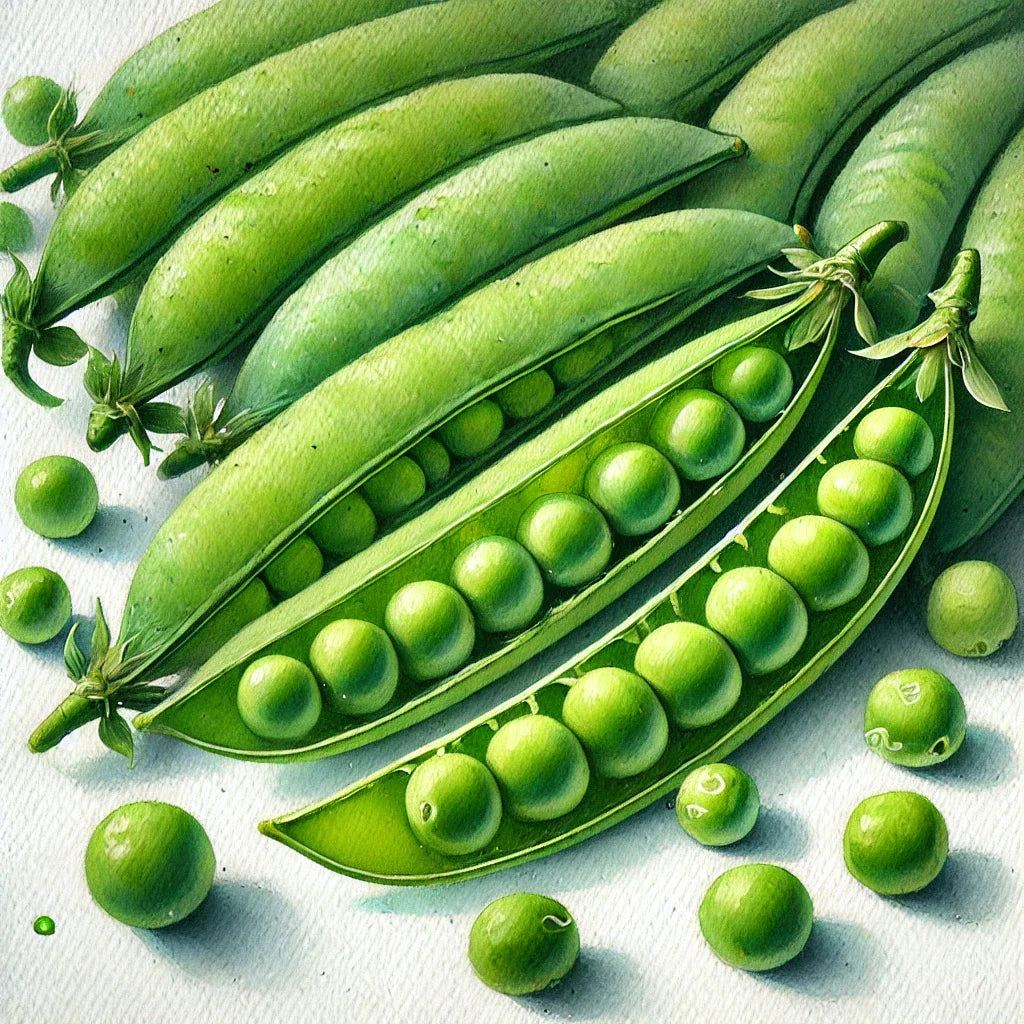
Grow and Save Pea Seeds: A Guide with a Side of Humor
Peas: the cheerful little green gems of the garden. They’re low-maintenance, high-yielding, and packed with flavor. Plus, they make seed-saving easy, making them the ideal crop for anyone who wants to feel like a gardening pro without breaking a sweat. So, grab your trellis and let’s get growing!
How to Grow Peas
Peas are the early birds of the garden. They thrive in cool weather, don’t require much fuss, and will reward you with a steady supply of delicious, snappy pods. The only things they ask for? A trellis to climb and some protection from hungry pests (looking at you, mice!).
Time of Planting
Peas like to be planted as soon as the soil can be worked in spring. But don’t get too eager—if the soil temperature is below 50°F, they’ll take their sweet time germinating (if they even bother at all).
Spacing Requirements
Plant seeds ½–1 inch deep and space them 2–3 inches apart. Rows should be at least 18 inches apart to give your pea plants room to stretch.
Time to Germination
Peas usually take between 7–14 days to germinate, depending on soil temperature and moisture.
Special Considerations
Peas are natural climbers, and they’ll be happiest with a trellis to grab onto. Sturdy wire panels, bamboo stakes, or a simple system of chicken wire and twine will do the trick.
While they enjoy cool weather, peas hate drought, excessive heat, and waterlogged soil. So, plant them in well-draining, moisture-retentive soil in a spot that’s open yet sheltered. Basically, give them the best seat in the garden without putting them in the desert or a swamp.
Common Pests and Diseases
Peas are a hot commodity in the insect world. Pea moths, pea thrips, and even mice are known to go after them. If you don’t want to share your harvest, use crop covers to keep moths away when your plants start budding.
When and How to Harvest for Food Consumption
Peas have three main stages of harvest:
- Snap peas: Harvest when the pods are plump but still tender, before the seeds start to swell.
- Shelling peas: Pick when the pods are firm and the seeds inside are nice and round.
- Dry peas: Let the pods dry out completely until they turn brown and brittle.
If you’re unsure, taste-test a pod. If it’s sweet and crisp, you’re good to go!
Eating Peas
Peas are incredibly versatile. Eat them fresh off the vine, toss them into salads, stir-fries, and soups, or even blend them into dips. Snap peas and snow peas can be eaten whole, while shelling peas need to be, well, shelled.
For dried peas, think hearty soups and stews. And don’t forget about pea shoots—those tender little greens are delicious in salads or stir-fried with garlic!
Storing Peas
Want to enjoy that fresh pea flavor all year? Blanch and freeze them—they’ll stay good for up to a year. If you’re saving dried peas, store them in a cool, dry place, and they’ll last for several years.
How to Save Pea Seeds
If you’re new to seed saving, peas are the perfect starting point. They produce seeds in the same season they’re planted, and since they’re mostly self-pollinating, you don’t have to worry much about cross-pollination.
Life Cycle
Annual (which means they grow, produce seeds, and die all in one season—no long-term commitment required!).
Recommended Isolation Distance
Peas don’t mix and mingle too much, so if you want to keep your varieties pure, just space them about 10–20 feet apart. Easy!
Recommended Population Sizes
Technically, you can save viable seeds from just one pea plant. But if you’re thinking long-term and want to maintain genetic diversity, save seeds from 5–10 plants.
Assessing Seed Maturity
Pea seeds are ready when their pods are dry, brown, and have shrunk around the seeds inside. Basically, they should look like something you’d find in an old pantry—shriveled and totally unappetizing.
Harvesting Pea Seeds
If the first frost is coming and your pea pods aren’t completely dry yet, don’t panic! Just pull up the whole plant, roots and all, and hang it somewhere cool and dry. Once the pods are fully dried, crack them open and collect the seeds.
Cleaning and Processing
Remove the seeds from the dry pods and separate them from any plant debris. Let them air-dry for another six weeks to ensure they’re fully cured. (Patience, young gardener.)
Storage and Viability
Store your dried pea seeds in an airtight container in a cool, dark, and dry place. Properly stored, they’ll remain viable for 3–4 years, giving you plenty of time to plant, harvest, and repeat the process.
Final Thoughts
Growing and saving pea seeds is as easy as it gets in the gardening world. They’re low-maintenance, high-reward, and they taste amazing. Plus, once you’ve got a system down, you’ll never have to buy pea seeds again. So go ahead—get planting, get picking, and enjoy the fruits (or rather, pods) of your labor!
